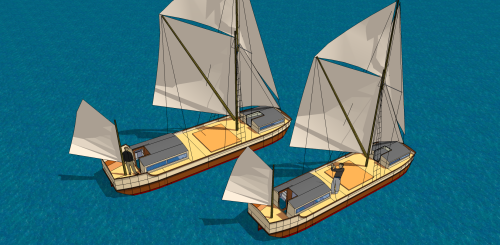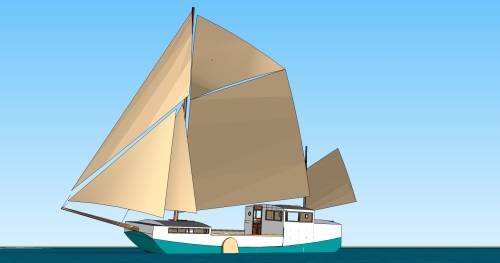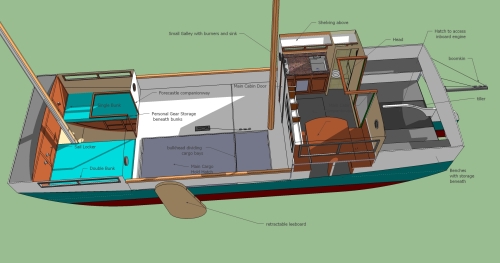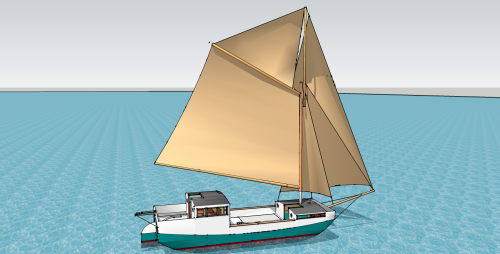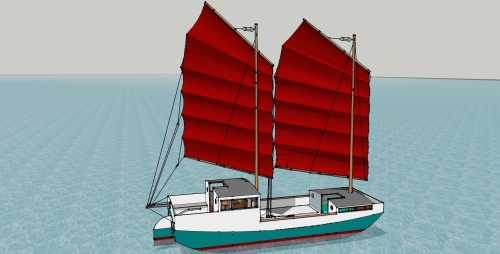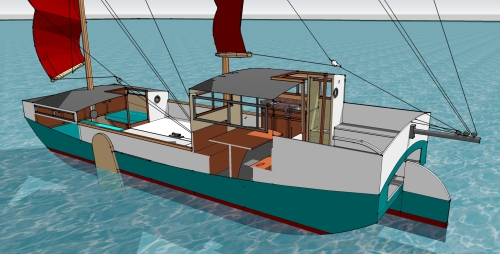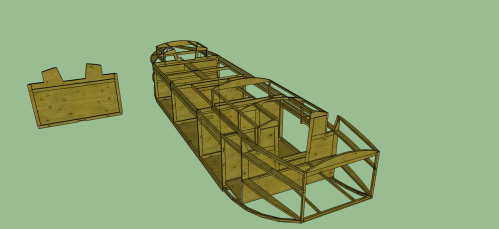 Here you can see a view of the inner structure of our planned barge. It is 8 feet in beam and 36 feet long, and features five bulkheads. This is probably a little excessive but will add to strength and help protect cargo in the event of a breach or leak. The sides and the belowdecks space are four feet in height, making maximum use of the width of 4′ x 8′ sheets of plywood.
Here you can see a view of the inner structure of our planned barge. It is 8 feet in beam and 36 feet long, and features five bulkheads. This is probably a little excessive but will add to strength and help protect cargo in the event of a breach or leak. The sides and the belowdecks space are four feet in height, making maximum use of the width of 4′ x 8′ sheets of plywood.
As an improvisation on Dave Zeiger’s Triloboat, we’ve elected to point the bow, with matched curves in both dimensions (which Dave calls an “advanced barge,” with turbulence-reducing properties) and bring the stern sides in some too as you can see. This design involves curving the bow and stern chine logs (reinforcing framing members where the bottom plywood and side plywood join) to curve in two dimensions but we’re up for this challenge. We plan on using “tape and glue” joints and sheathing the whole with fiberglass.
The forward deckhouse provides light and headroom in the sleeping area. The aft deckhouse does the same for the galley and head, and this area can convert to sleep maybe two more people. There is 6’6″ headroom in the center of the cabins.











